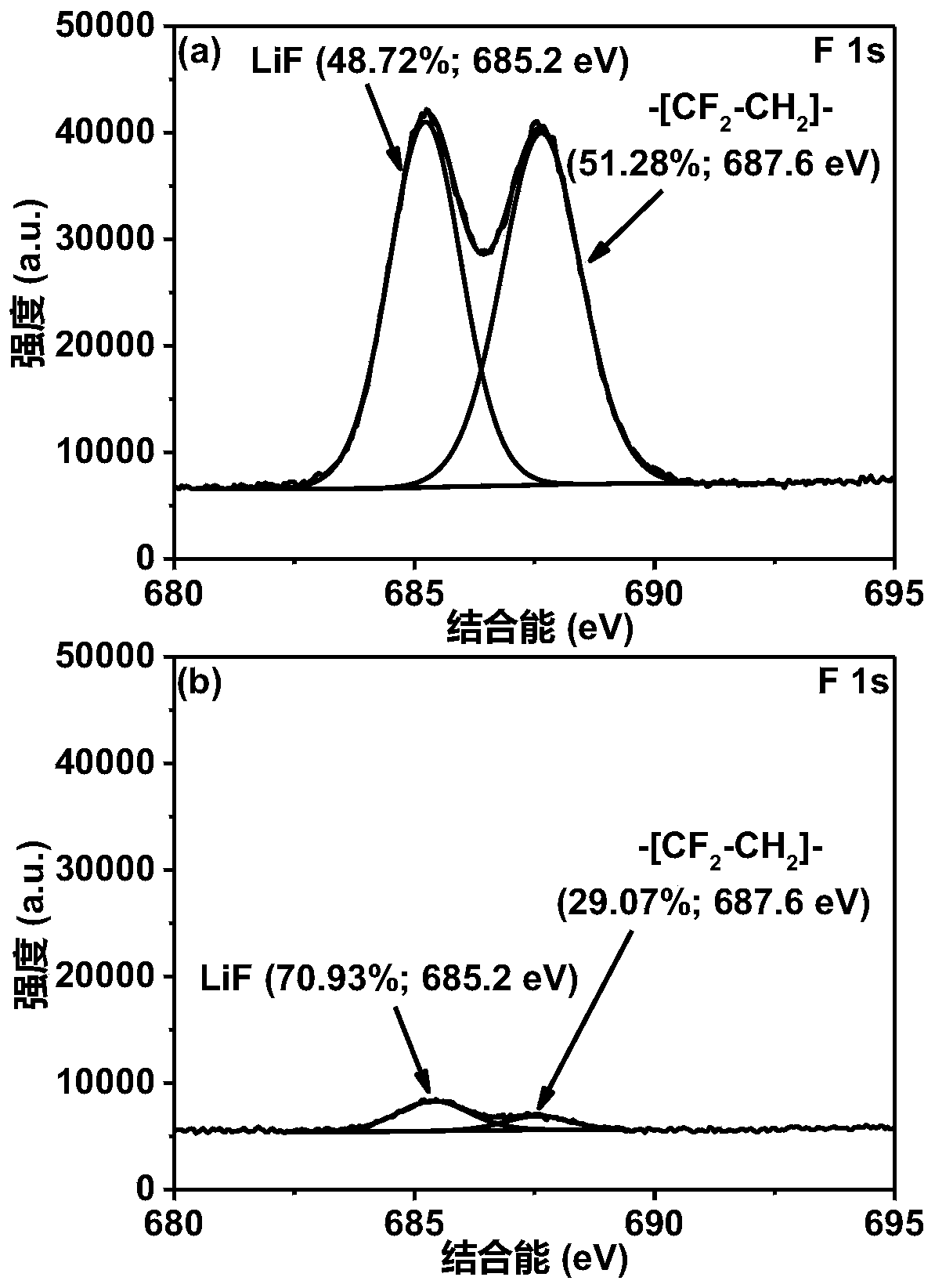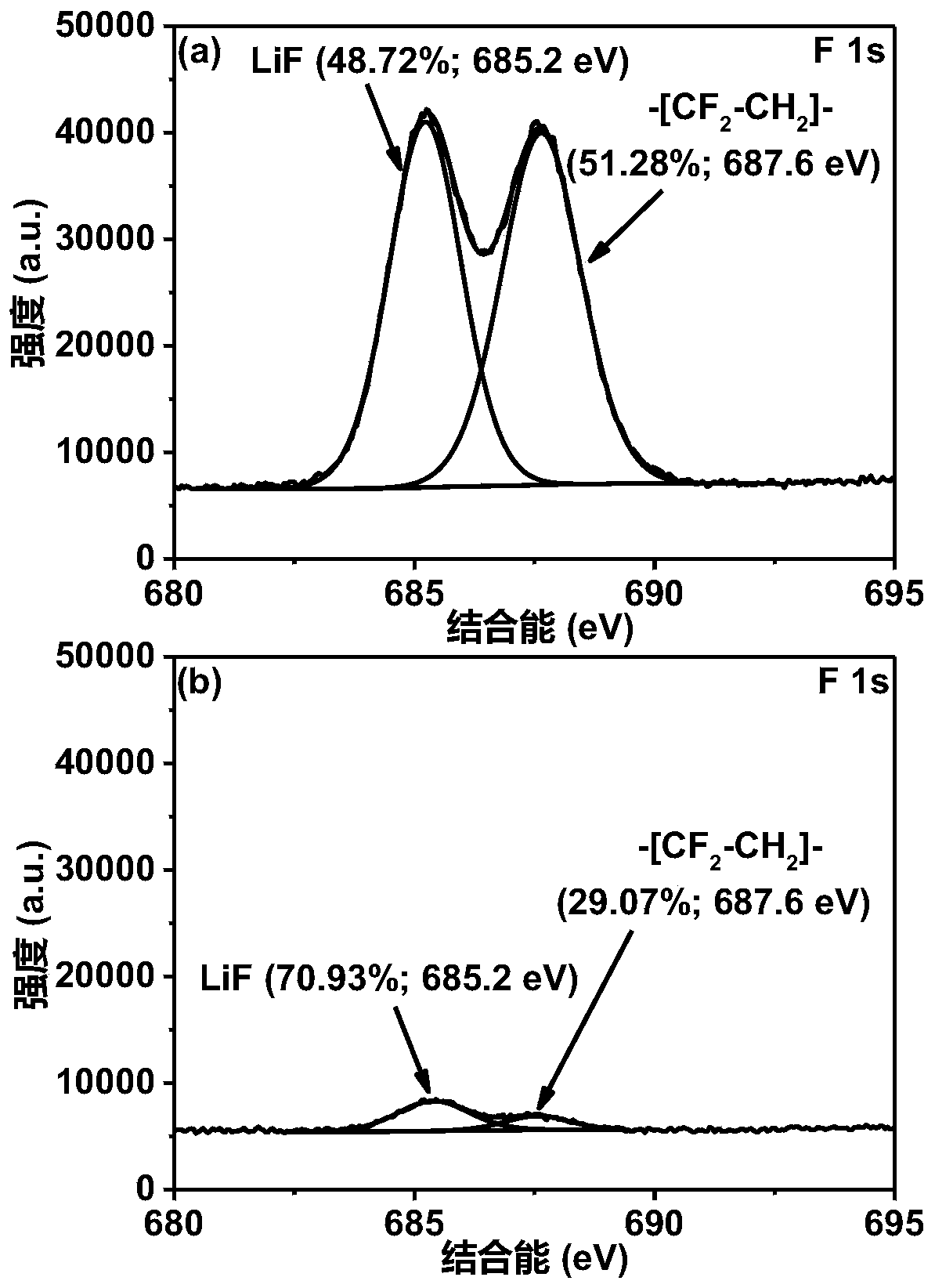In-situ fluoride adsorption method from waste lithium battery via high-ferro slag
A technology of lithium battery and fluoride, which is applied in the field of industrial solid waste treatment and recycling, can solve air pollution and other problems, achieve the effect of preventing air pollution, achieving significant economy, and realizing volume reduction
- Summary
- Abstract
- Description
- Claims
- Application Information
AI Technical Summary
Problems solved by technology
Method used
Image
Examples
Embodiment 1
[0029] Discarded lithium batteries were discharged in sodium chloride solution to avoid spontaneous combustion reactions during disassembly. Then the waste lithium battery is disassembled, and the positive pole piece, negative pole piece, separator and metal shell are obtained through separation, and the positive pole piece is dried for later use.
[0030] The high-speed iron slag was mixed with the positive electrode sheet of the obtained waste lithium battery at a mass ratio of 2:1, and the heating reaction was carried out in a tube furnace to decompose the organic binder in the positive electrode sheet. The reaction temperature is set to 300 degrees, the reaction time is set to 10 minutes, the heating rate is 10 degrees / min, and the temperature is naturally cooled after reaching the predetermined temperature. After cooling down to room temperature, take out the positive electrode piece after heating and reacting in the tube furnace from the high-speed iron slag, rinse the r...
Embodiment 2
[0034] Discarded lithium batteries were discharged in sodium chloride solution to avoid spontaneous combustion reactions during disassembly. Then the waste lithium battery is disassembled, and the positive pole piece, negative pole piece, separator and metal shell are obtained through separation, and the positive pole piece is dried for later use.
[0035] The high-speed iron slag was mixed with the positive electrode sheet of the obtained waste lithium battery at a mass ratio of 2:1, and the heating reaction was carried out in a tube furnace to decompose the organic binder in the positive electrode sheet. The reaction temperature is set to 400 degrees, the reaction time is set to 10 minutes, the heating rate is 10 degrees / min, and the temperature is naturally cooled after reaching the predetermined temperature. After cooling down to room temperature, take out the positive electrode piece after heating and reacting in the tube furnace from the high-speed iron slag, rinse the r...
Embodiment 3
[0037] Discarded lithium batteries were discharged in sodium chloride solution to avoid spontaneous combustion reactions during disassembly. Then the waste lithium battery is disassembled, and the positive pole piece, negative pole piece, separator and metal shell are obtained through separation, and the positive pole piece is dried for later use.
[0038] The high-speed iron slag was mixed with the positive electrode sheet of the obtained waste lithium battery at a mass ratio of 3:1, and the heating reaction was carried out in a tube furnace to decompose the organic binder in the positive electrode sheet. The reaction temperature is set to 300 degrees, the reaction time is set to 20 minutes, the heating rate is 10 degrees / min, and the temperature is naturally cooled after reaching the predetermined temperature. After cooling down to room temperature, take out the positive electrode piece after heating and reacting in the tube furnace from the high-speed iron slag, rinse the r...
PUM
| Property | Measurement | Unit |
|---|---|---|
| Stripping rate | aaaaa | aaaaa |
| Stripping rate | aaaaa | aaaaa |
| Stripping rate | aaaaa | aaaaa |
Abstract
Description
Claims
Application Information
 Login to View More
Login to View More - R&D
- Intellectual Property
- Life Sciences
- Materials
- Tech Scout
- Unparalleled Data Quality
- Higher Quality Content
- 60% Fewer Hallucinations
Browse by: Latest US Patents, China's latest patents, Technical Efficacy Thesaurus, Application Domain, Technology Topic, Popular Technical Reports.
© 2025 PatSnap. All rights reserved.Legal|Privacy policy|Modern Slavery Act Transparency Statement|Sitemap|About US| Contact US: help@patsnap.com



